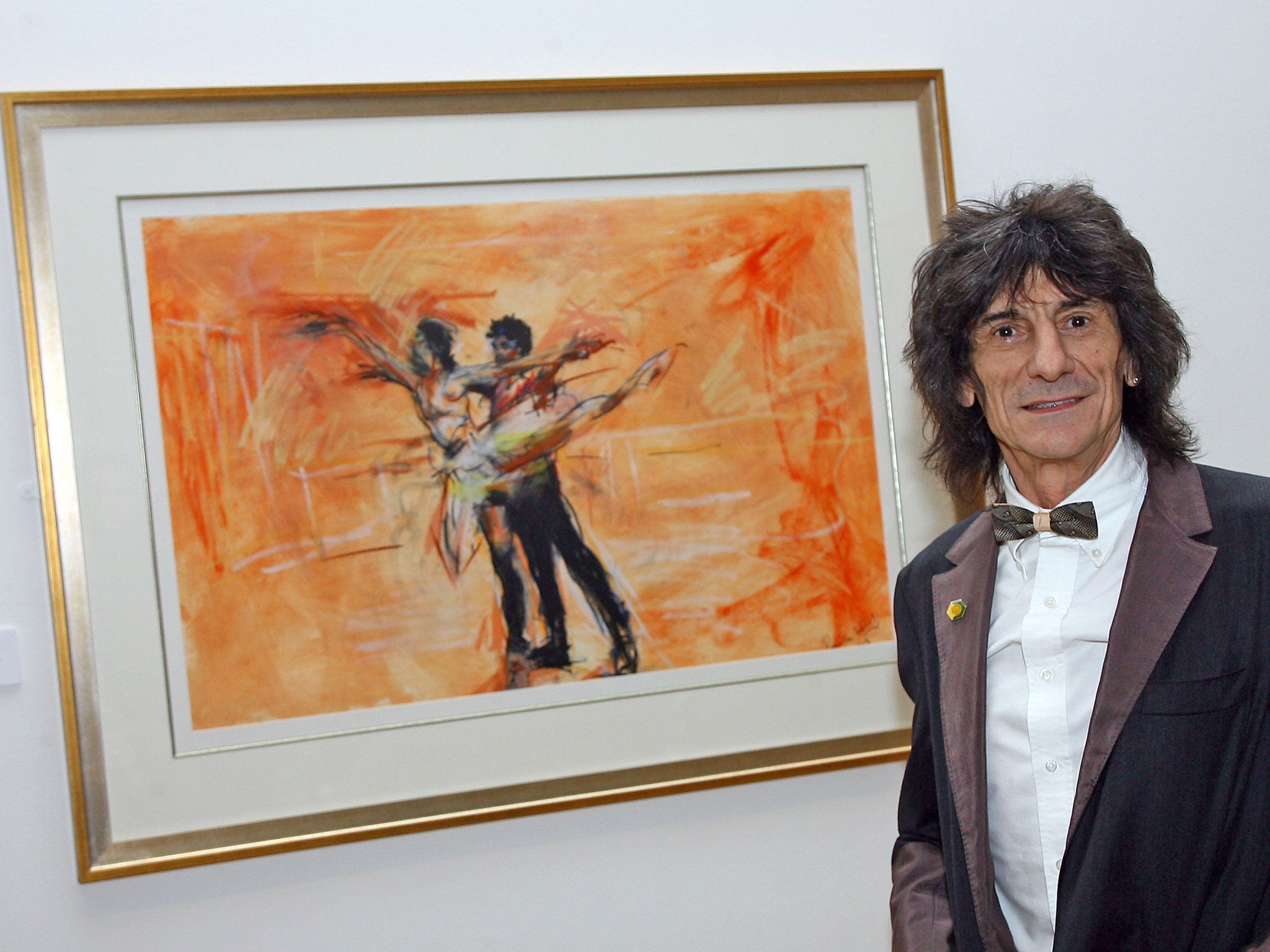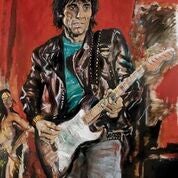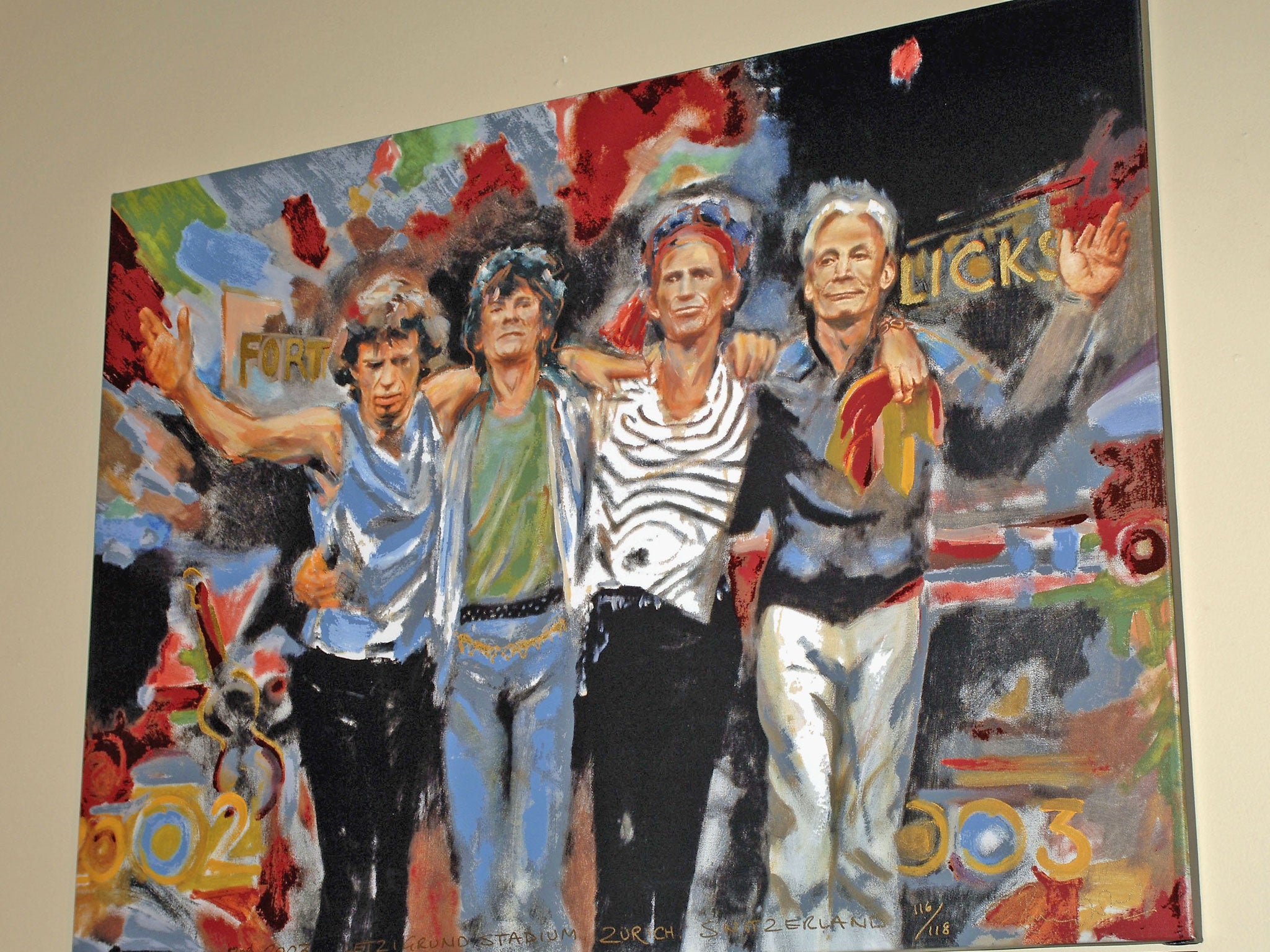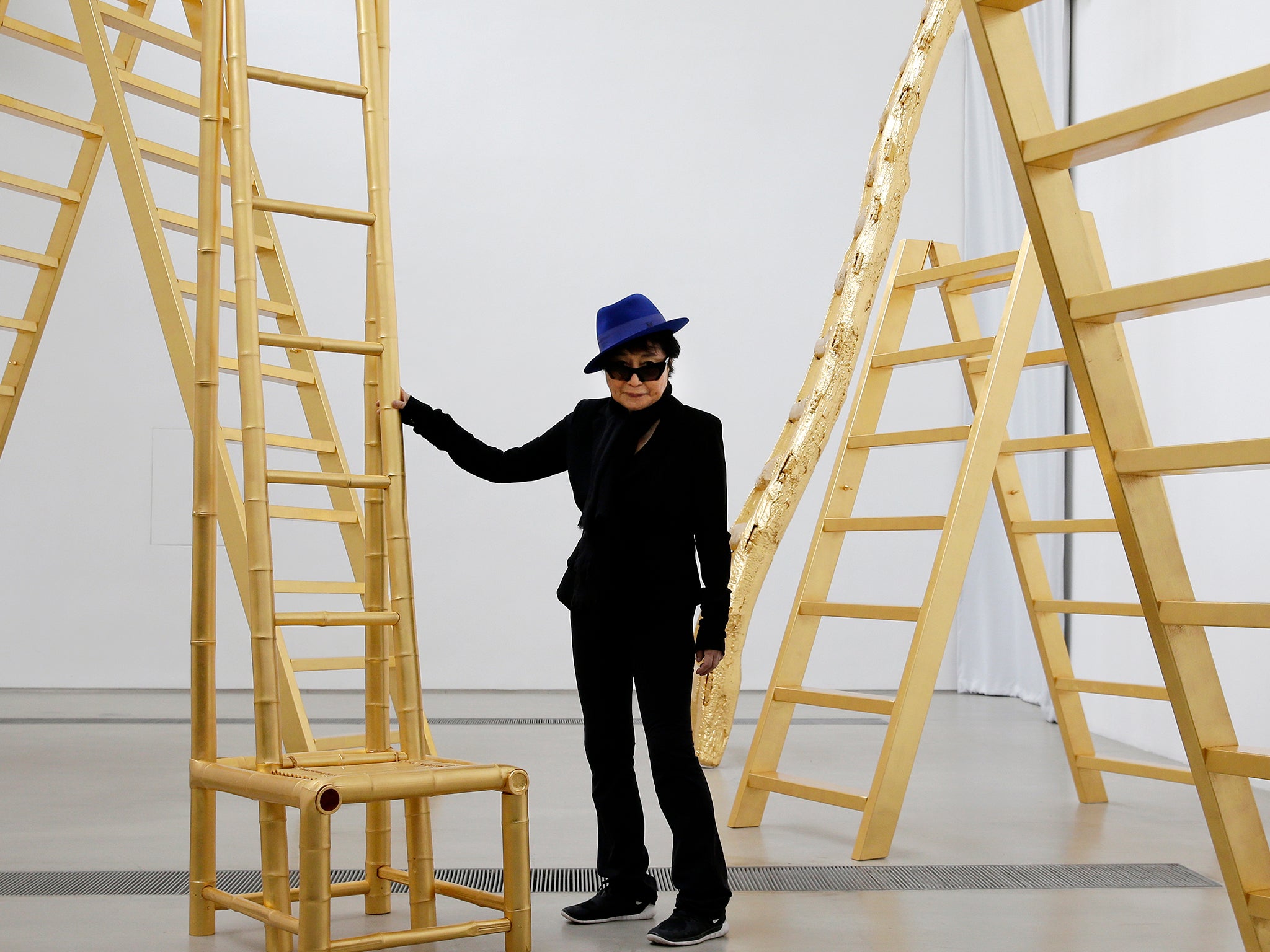The Rolling Stones' Ronnie Wood joins a long line of musicians turned artists
Should musicians stick to their music, or should we allow them to spread their wings to other mediums – even if they're not that good

Your support helps us to tell the story
From reproductive rights to climate change to Big Tech, The Independent is on the ground when the story is developing. Whether it's investigating the financials of Elon Musk's pro-Trump PAC or producing our latest documentary, 'The A Word', which shines a light on the American women fighting for reproductive rights, we know how important it is to parse out the facts from the messaging.
At such a critical moment in US history, we need reporters on the ground. Your donation allows us to keep sending journalists to speak to both sides of the story.
The Independent is trusted by Americans across the entire political spectrum. And unlike many other quality news outlets, we choose not to lock Americans out of our reporting and analysis with paywalls. We believe quality journalism should be available to everyone, paid for by those who can afford it.
Your support makes all the difference.Musicians often refer to themselves as “artistes” but increasingly famous rockers want to be recognised for their aesthetic talents rather than just their recorded ones.
You may or may not know that the Rolling Stones’ Ronnie Wood is a prolific painter. Having trained at Ealing College of Art he has combined art and music throughout his career and can regularly be found sharing photos of his work on social media, most recently tweeting a tender sketch of his wife and unborn twins. An exhibition of his work is about to open at Castle Fine Art, South Molton Street gallery with prices starting at £2,250.
Trouble is, the exhibition, called Private Collection, is being billed as a chance for fans to “get their hands on a piece of rock ‘n’ roll history”. Which is all very well, but compounds the fact that Ronnie’s paintings are attractive chunks of Rolling Stones memorabilia rather than a chance to invest in the brightest and most exciting contemporary artist on the block. They will sell for thousands regardless of whether they are any good: and therein lies the nub.
Can a famous musician ever be taken seriously as an artist? They might be a creative genius on guitar, their lyrical lustre celebrated the world over, but will they be feted as “true artists” by the notoriously excoriating art world? Even without the sniffy, Emperor’s New Clothes nature of sifting good art from bad, chances are the efforts of some of our best known musicians would be more likely to end up in Boston’s Museum Of Bad Art than in Tate Modern.
A couple of years ago one of Ronnie’s paintings was auctioned by Christie’s for £300,000 but his rocker colleague Bob Geldof had this to say about his talents at the time: “Personally, I think Ronnie’s work is terrible,” the Boomtown Rat told the Daily Mail. “Rock stars like Ronnie should stick to music, not painting. There are quite a few famous rock stars who do art, but I think Ronnie, Bob Dylan and all the rest - they are all useless.”

Dylan, despite being among the 20th century’s most celebrated and successful musicians, whose lyrical prowess has earned him space in poetry books and academic studies, has had a hard time from the critics when it comes to his paintings. The late, and notoriously spiky, art critic Brian Sewell called Dylan’s Skip Sharpe portrait “Contemptible. Just rubbish” and lambasted the National Portrait Gallery for exhibiting it in its Dylan Face Value show in 2013.
Last year The Independent’s art critic Michael Glover wrote a barbed critique of Dylan’s Brazil Series: “The most important question is this, of course. Does Bob Dylan, have any real skills as a painter? Only intermittently. His art always possesses a verve and a kind of brash immediacy... It is also technically pretty crude, often suspended somewhere between cartoon and caricature.”

Yet when Dylan’s artistic efforts were first unveiled to the world (reluctantly, as legend would have it) around the turn of the century he was compared to Matisse, Edward Hopper and the German Expressionists. However, the more he has exhibited his oeuvre the nastier the comments from critics have become.
Deserved or not this is a predicament that has faced – and possibly put off – many famous or successful would-be “artists”. Never mind that the YBAs became pseudo rock stars in their own right, if actual rock stars want to take a bash at “proper art” they’d better be technically and undeniably brilliant or they’ll be fed to the lions.
The roll call of musicians who went to art school reads like the credits of Top Of The Pops in its heyday: Keith Richards, Eric Clapton, Ray Davies, Freddie Mercury, Jimmy Page, Brian Ferry, Pete Townshend, Jarvis Cocker…the list goes on.
Roxy Music’s Brian Eno is one of the few to have clawed his way out of the “rock star” epithet to be known equally, if not more, for his pioneering visual artwork. But it might help that he uses new technologies, light display, digital media – often in sympathy with soundscapes he has created – rather than donning a painter’s smock and making like Picasso.
The artists who appear to be taken seriously are the ones who keep the boundaries between what they’re creating and how they want the public to perceive them. PJ Harvey has never come out and said “Hey, look at me I’m an artist too” but has constantly supported her musical endeavours with drawings, paintings and poetry. Patti Smith has only recently begun exhibiting her photography (a show of her work opened at the Robert Miller Gallery in New York last month) but she has been snapping away for more than 35 years and her drawings have previously graced album covers.

There is, after all, no reason why polymaths shouldn’t be able to flit adeptly between the creative disciplines. Except, perhaps that it changes the public persona they have spent so long crafting. Sewell’s green ink decried Paul McCartney’s artistic efforts as “childish rubbish” and who knows what the critic would have made of fellow Beatle John Lennon’s spidery sketches, or his conceptual collaborations with wife Yoko Ono.
Sometimes these famous talents appear too caught up in their own ideas and this can lead to overt criticism. They exist within a bubble, people are paid to look after them and babysit them and so perspective can be difficult to hold onto. Some years ago Marilyn Manson (whose eerie watercolours have been largely well received by the art world and feature in collections around the globe) was criticised because a painting he’d based on the gruesome Black Dahlia murder of 1940s Hollywood actress Elizabeth Short was alleged to have provoked a copycat attack. Fame and exposure can sometimes be unexpectedly harmful.

In 2012 I interviewed Libertines and Babyshambles frontman Pete Doherty about an exhibition of paintings made using a technique he called “arterial splatter” (extracting his own blood, or that of a friend’s, and squirting it a canvas to make a drawing). While Marc Quinn and others have been using bodily fluids in artwork and been celebrated for it, Doherty’s exhibition provoked a decidedly mixed reaction. But the very fact of putting himself, his own blood, into the work, regardless of whether the pictures were powerful or decorative or moving, meant they had a cache and a value that went far beyond the aesthetic.
Does the art industry worry that famous musicians-turned-artists invite such fierce criticism? Cassie Beadle, curator of Pete Doherty’s blood painting exhibition at the Cob Gallery in London, thinks it does. “When working with Doherty, we were aware of the kind of criticism we would face but we didn’t want to ignore the elephant in room…It’s certainly a concern that the fame of the artist can overshadow any discernible talent,” she says.
But whatever those concerns are there’s no denying it makes commercial sense for galleries in the short term. “An artist’s fame and the popularity of their output, even if the artistic credibility is lacking, is certainly directly correlated,” Beadle says.
And with the music industry struggling to stay commercially viable perhaps it’s no wonder musicians are flogging their artwork for tens of thousands. At least we won’t be expecting a retrospective of Geldof’s work any time soon. “I have tried painting and drawing myself, but I have no talent for it. I really don't know a rock musician who has,” he says.
Ronnie Wood’s ‘Private Collection’ is available to buy from Castle Fine Art galleries nationwide from Friday 29th April, with prices starting from £2,250. For further information please see: www.castlegalleries.com
Join our commenting forum
Join thought-provoking conversations, follow other Independent readers and see their replies
Comments